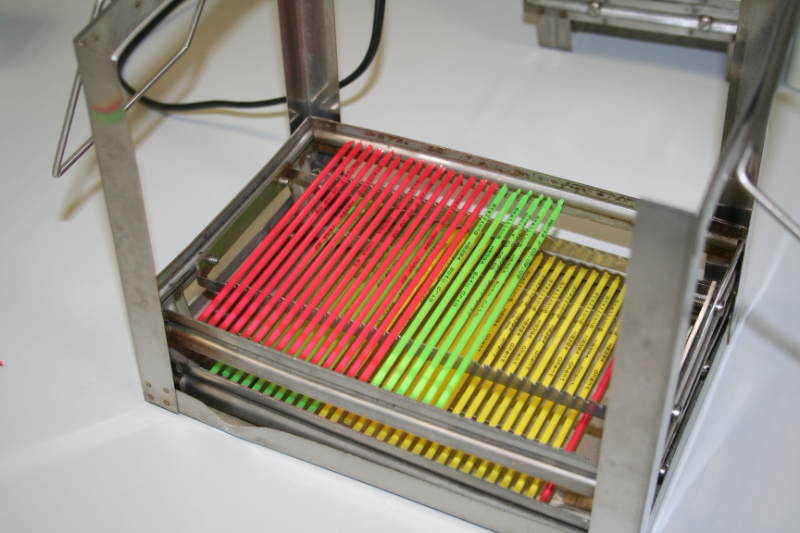OPU and ICSI what is that exactly?
Modern reproduction techniques are becoming more and more important in horse breeding because these techniques offer many advantages compared to traditional reproduction techniques. Now that AI (Artificial Insemination) with fresh or frozen semen is standard in Dutch warmblood breeding and ET (Embryo Transplantation) is also widely used, OPU (Ovum Pick Up) and ICSI (IntraCytoplasmic Sperm Injection) have been used more and more over the last five years.
In vitro (i.e. in the laboratory) production of embryos by means of OPU/ICSI is the most recent reproduction technique. It differs significantly from all other techniques as fertilisation takes place in the laboratory. Currently, this technique is very popular among breeders as it has a number of advantages. For example, foals can still be 'made' from mares which can no longer become pregnant (due to abnormalities of the fallopian tube, uterus or cervix) or which no longer produce an embryo during an embryo flush.
OPU/ICSI
Both breeders and veterinarians know how frustrating it can be to manage mares that continually have fluids in the uterus or that repeatedly fail to become pregnant. Furthermore, OPU/ICSI can be performed all year round as long as there are enough follicles ( undeveloped cells) on the ovaries. Embryos produced by OPU/ICSI tolerate the freezing process much better than flushed embryos. This in turn has the advantage that surrogate mares can be used more efficiently. Often, the surrogate mares are purchased by the owner, which is financially more advantageous, as the rental of a surrogate mare naturally involves some additional costs. Finally, rare (stallion no longer living) or expensive frozen semen can be used very efficiently, as only a small quantity of semen is needed for fertilisation of the eggs. Also, sperm of poor quality or with poor fertilising ability can be used successfully in ICSI.
Embryo
The whole process of producing embryos in the laboratory (in vitro) involves several steps, including collecting oocytes from the ovaries of a donor mare (OPU), maturing the obtained eggs, injecting one egg with one sperm (ICSI) and growing the embryos to a certain stage of development (blastocyst) at which they can be frozen or transplanted into a surrogate mare. Although this all sounds quite simple, it is common knowledge that this whole process requires a great deal of specialist expertise in order to be successful.
Text: Anthony Claes en Marianne Sloet
Image: Faculteit Diergeneeskunde, Utrecht























 KWPN Database
KWPN Database KWPN.tv
KWPN.tv KWPN Horses for Sale
KWPN Horses for Sale